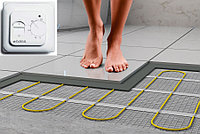The reader first scans a horizontal line across the top of the page, whether because of the menu bar, or simply out of a habit of reading left-to-right from the top. 02. The Z-pattern is perfect for interfaces where simplicity is a priority and the call to action is the main takeaway. Point #1 — This is a prime location for your logo. Jakob Nielson of the Nielson Norman Group conducted a readability study based on 232 users scanning thousands of websites and elaborates on the practical implications of the F-Pattern:
Users will rarely read every word of your text. Communicating content relationships — The interface should present content in a way that matches how users prioritize information. Here’s a few best practices to keep in mind:
Background — Separate the background to keep the user’s sight within your framework. Let’s look at each of these in turn. Point #4 — This is the finish line, and an ideal place for your primary Call to Action. Just remember that content is always king, and the sidebar exists to get users involved in a deeper level. Visual organization
In his paper Communicating with Visual Hierarchy, Luke Wroblewski, author and senior principal of product design at Yahoo, explains that the visual presentation of a web interface is essential for:
Informing users — Like an invisible hand, the interface should guide users from one action to the next without feeling overbearing. Source: Understanding the F Layout; www.webdesign.tutsplus.com/articles/understanding-the-f-layout-in-web-de…You can see in the image that the most important content can be seen in a few seconds, with more detailed content (and a call to action) presented immediately below for quick scanning. More than being creative, a good artist must also consider subtleties like composition, colors, size, what to include, and — perhaps more importantly — what to leave out. Center of Page — A Featured Image Slider in the center of the page will separate the top and bottom sections and guide the eyes along the Z path. Source: Understanding the Z Layout; http://webdesign.tutsplus.com/articles/understanding-the-z-layout-in-web…The Z-Pattern is applicable to almost any web interface since it addresses the core website requirements such as hierarchy, branding, and calls to action. When the reader finds something they like, they begin reading normally, forming horizontal lines. As with all patterns, the F-Pattern is a guideline — rather than a template — because the F-pattern can feel boring after the top rows of the F. The end result is something that looks like the letters F or E. When the eye reaches the end, it shoots down and left (again based on the reading habit), and repeats a horizontal search on the lower part of the page. How could this impact the interface design of your website? (Desirability)
The predictability of the human eye
Whether it be a scurrying movement in the corner of your eye or a sexy walk from someone across the street, the human eye is drawn automatically to certain points of interest.
In this article we’ll first look at what visual hierarchy is and how it’s achieved, then we’ll look at how that works in relation to the natural movement of the human eye. Creating emotional impact — People visit restaurants for more than just an edible meal. While some of this depends on the person, the majority of people tend to follow definite trends — including how they view a web page. Forcing a Z-pattern for a website with complex content may not work as well as the F-pattern, but a Z-pattern can help bring a sense of order to simpler layouts (and increase conversion rates). The F-Pattern
Typically for text-heavy websites like blogs, the F-Pattern comes from the reader first scanning a vertical line down the left side of the text looking for keywords or points of interest in the paragraph’s initial sentences. For example, payment processor Square leads you through its value propositions as you scroll down, with relevant calls to action each step of the way. Once you know what you want your users to see, it’s just a simple matter of placing them in the pattern’s ‘hot spots’ for the right interactions. That’s no easy feat, which is why we hold the masters like da Vinci and Van Gogh in such high regard. The first two paragraphs are the most important and should contain your hook. Predicting where the user’s eye will go can be a huge advantage. You can even extend the Z Pattern throughout the entirety of the page, repeating Points 1-4 if you feel that more value propositions are needed before the call-to-action. For analysis of UI examples from over 33 companies, check out the free ebook Web UI Best Practices. (Usability)
Why should I care? Start paragraphs, subheads, and bullet points with enticing keywords. Point #2 — Adding a colorful secondary call to action can help guide users along the Z-pattern. They want taste, texture, presentation, and a memorable ambiance. 01. For example, popular design website Abduzeedo includes broad categories at the top, featured content in the middle, and detailed categories in the footer.
Library builder
Articles about the repair, construction, interior design and landscaping, plumbing, electrical, waterproof wire, wire gas, building materials, construction machinery and equipment ...
Библиотека строительства - статьи о строительстве и ремонте © 2020
Frontier Theme



